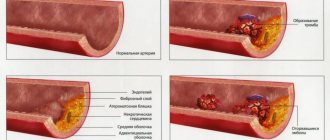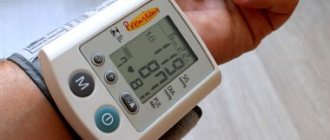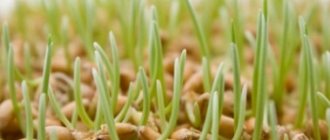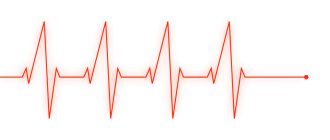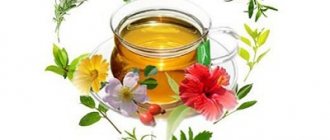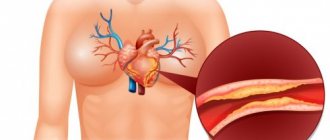Normal blood circulation is important for the heart, all organs and systems without exception. The “components” of the body cannot work properly without the supply of useful substances through the blood and without the timely removal of excess substances - products of metabolic processes, carbon dioxide. Congestion can lead to persistent dysfunction.
The cause of impaired blood circulation is a change in the tone of blood vessels. Their narrowing can occur due to smoking, a sedentary lifestyle, excess weight, diseases of the thyroid and pancreas, kidneys, heart, the development of atherosclerosis, and thrombosis. Insufficient blood circulation in the legs is associated with sedentary work or standing for long periods of time.
General Tips
All the methods described below are best used in combination, since individually they will not give a pronounced effect:
- Control your weight . With excess body weight, the load on the legs increases, the blood vessels deteriorate and blood circulation is impaired. If possible, try to get rid of extra pounds.
- Visit your doctor . Poor circulation is only a consequence of more serious diseases. A comprehensive examination will help identify varicose veins, diabetes, heart problems, osteochondrosis, abnormalities in the composition of the blood or disorders of the autonomic nervous system. Start treatment by eliminating diseases.
- Buy special tights with a massage effect at the pharmacy . They will help reduce the load on your legs and help restore blood circulation.
- After consulting with your doctor first, start taking preventive medications such as Venza, Ascorutin, Escusan, and so on.
- Every evening after taking a bath or shower, perform a light, rubbing foot massage using ointments with medicinal ingredients.
- Improve the general condition of the body . Be sure to take a complete vitamin complex every quarter.
- Avoid uncomfortable shoes . If it is tight, narrow or in high heels, then blood stagnation occurs in the legs and its circulation is impaired. Give preference to soft shoes made of natural, breathable materials with small wedges.
- Don't wear tight clothes . Jeans or trousers that are too tight compress the blood vessels, making normal circulation impossible.
- Use a contrast shower daily . This will relieve tension and improve blood circulation.
- Learn to sit correctly . Do not cross your legs; change the position of your legs from time to time. Sitting and standing for too long also leads to poor circulation, so alternate between them.
- Visit a good reflexologist . Massaging certain points on the feet improves blood flow, relieves fatigue and has a beneficial effect on improving immunity.
Recovery after a heart attack or stroke
After damage to the heart muscle, a long period of rehabilitation is required. A prerequisite is exercise therapy - physical therapy, which is prescribed by a specialist. These will be smooth bends and turns of the body, walking in place and long walks. If you do not pay attention to physical activity, the heart muscle will not receive enough oxygen and nutrients for full recovery.
IMPORTANT! After myocardial damage, the intensity of exercise should be monitored. During gymnastics, the pulse should remain within 120 beats per minute.
Exercises for the heart and blood vessels are a mandatory way to prevent many diseases. Without physical activity, blood volume decreases, arteries and veins lose elasticity, and movement through the capillaries slows down. It is important to take care of the condition of the cardiovascular system as early as possible so that they remain healthy in old age.
Proper nutrition
If your blood circulation is poor, your legs may swell and get tired quickly. To prevent this from happening, it is recommended to follow a diet that will help improve and maintain vascular health.
Some foods prevent the deposition of cholesterol, slightly thin the blood, accelerate its circulation, and strengthen the walls of blood vessels:
- The amount of fatty foods should be limited to a minimum; it negatively affects the condition of blood vessels and the quality of blood circulation.
- Ginger is very useful. For example, you can try this drink: half a teaspoon of chopped ginger, twice as much honey and a small pinch of black pepper. All ingredients need to be poured with a glass of boiling water. This spicy medicine will stimulate blood flow and boost immunity.
- Add healthy spices to your food - garlic, horseradish, mustard, red and black pepper.
- In summer and autumn, do not miss the opportunity to dine on watermelon. The substance lycopene contained in it actively removes cholesterol from the body and activates blood circulation.
- Avoid consuming fast food, refined foods, carbonated drinks and drinks with high caffeine content.
- Eat more foods high in fiber - raw fruits and vegetables, grains.
- For good blood circulation, vitamin B is simply necessary. It is found in sufficient quantities in bread, especially black and coarsely ground, rolled oats, beans, lentils, nuts, especially pine nuts, fish
- You need to drink at least 8 glasses of regular clean water per day. This will prevent blood from thickening.
Proper balanced nutrition will help improve blood circulation, correct blood properties, and improve immunity. Along with the diet, it is recommended to give up bad habits such as smoking and drinking alcohol.
Improve your lifestyle
A healthy diet and home remedies not only relieve symptoms,
but also help you recover.
If you smoke, give up the habit, don't drink alcohol often, walk more, ride a bike and generally exercise your arms and legs, swim and water sports - these are all great activities for improving your health.
Walking for 40 minutes—something most people can do—results in amazing improvements in circulation in the arms and legs.
You should also wear loose clothing (it is especially important not to restrict your body with it when you sleep).
Exercises to improve blood circulation
Since restoring impaired blood circulation in the legs is a long process, you will not see the first results soon. You can achieve a faster effect if you additionally perform a set of simple exercises.
Exercise No. 1.
It is performed while sitting with your arms spread to the side. Lean forward while clasping your left leg with your hands. Straighten up, raising your left knee towards your chest. Return to the original position and repeat the exercise, changing legs.
Doctor's advice
Amlodipine and Pentoxifylline reduce blood pressure and are taken under daily supervision. Actovegin and Solcoseryl improve oxygen supply to tissues and help accelerate wound healing. The main indication for use is trophic ulcers with varicose veins and diabetes mellitus. If blood circulation is impaired due to atherosclerosis of the vessels of the legs, then venotonics are considered the optimal means. In the case of diabetes mellitus, as the cause of decreased blood flow in the legs, the basis of therapy is aimed at correcting glucose levels and taking medications such as Octolipen and Milgamma.
Victoria Druzhikina Neurologist, Therapist
Exercise No. 2.
Performed sitting with hands clasped under the hips. Using your hands, lift your hips with your feet on your toes. Relax, lower your feet to the floor. Repeat several times.
Exercise No. 3.
Performed while sitting. Lean forward, grasping the shin of your left leg. Shift your weight to your right buttock as you lift your bent leg, then straighten it. Repeat with the other leg.
Exercise No. 4.
Performed sitting with knees apart and feet shoulder-width apart. Squeeze your hips and bring your knees together. Return to the previous position and repeat several times.
Exercise No. 5.
Performed while sitting using a gymnastic bandage. Throw the bandage over your feet, straighten your legs, and take the ends of the bandage in your hands. Straighten your feet, trying to stretch the bandage.
Exercise No. 6.
Place a gymnastic bandage on the foot of your left leg, straighten your legs. Pull the bandage, lifting your leg, move it to the side and return to its previous position. Repeat, changing legs.
Exercise No. 7.
It is performed while sitting with your hands on your knees. Using your arms, move both legs to the left side. Return to your previous position and move your legs to the right. Repeat.
Exercise for cerebral vasospasm
Blood supply to the brain occurs through the coronary vessels. They run along the cervical spine and then supply oxygen and nutrients to nerve cells. Their spasms can be a consequence of neck tension during the day, as well as osteochondrosis, vertebral displacement and other dangerous pathologies.
Dystonia and spasm of cerebral vessels can be identified by the following symptoms:
- acute headache, increased or decreased intracranial pressure;
- sudden nausea, deterioration of coordination of movements;
- memory loss, tinnitus;
- decreased performance.
A sedentary lifestyle provokes a deterioration in well-being. It is worth paying attention to physical activity every day, especially for those who spend a lot of time in a sitting position. Simple tilts and turns of the head are also useful. They should be smooth and not cause discomfort.
Gymnastics for cerebral vessels is simple and easy to perform at home or at work. Each exercise is repeated for several minutes:
- in a standing position, rotate your head clockwise and counterclockwise;
- cross the fingers of your right and left hands, raise your hands above your head and lower them to the ground (“chopping wood”);
- alternately with the right foot to the left hand and vice versa;
- in a standing position, rotate your arms in the shoulder joints (first in one direction, then in different directions - left arm forward, right arm back and vice versa);
- exercise “birch tree” - in a lying position, raise your straightened legs up, supporting your lower back with your hands.
ADVICE! Cerebral vasospasm can be prevented by regular exercise. Active walking, running or dancing stimulates blood circulation, strengthens blood vessels and prevents many dangerous pathologies of the cardiovascular system.
Folk remedies
In case of impaired blood circulation in the legs, traditional medicine can provide good help.
All of them are completely safe, accessible and healthy.
Here are some of the most popular proven recipes:
- Place fresh or dried nettles in a bowl, filling 1/3 of the volume. Top up with boiling water. Wait until it cools down to the point where you can put your feet in it. Keep them in the infusion for about 10 minutes. Repeat the procedure after 2 – 3 days.
- Take 300 g of prunes and hazelnuts, half a kilo of raisins and 600 g of walnuts. Pass all this through a meat grinder, add two tablespoons of honey and mix. You need to take the medicine daily, a tablespoon half an hour before each meal (3 times).
- An excellent remedy for poor blood circulation is an infusion of horse chestnut flowers. For a half-liter bottle of vodka, take 50 g of dried flowers and leave in a warm place for two weeks in a dark place. Be sure to shake every day. Take the infusion 30 drops, diluted in a quarter glass of warm water, three times a day before meals (half an hour). Treatment is carried out in courses of 10 days followed by a 5-day break.
- Steaming your feet in a bath with the addition of spruce needles and salt gives a quick effect. You need to add two tablespoons of raw materials per liter of water. And baths with linden blossom will relieve swelling.
The listed methods will help prevent circulatory disorders and improve it. But be sure to see a doctor, as self-medication can lead to undesirable consequences.
Diagnosis of acute ischemia during examination by a vascular surgeon
The classic picture of acute ischemia is determined by six symptoms:
- Sudden leg pain
- Pale skin
- Absence or deficit of movement in the affected limb
- Absence of pulse in the affected limb
- Decreased skin sensitivity
- Decreased skin temperature
The pain may be constant or with passive movement of the affected limb. With an embolic blockage, the pain is usually sudden and very intense. With thrombosis, the pain intensity is much less, and sometimes there is a progressive increase in intermittent claudication.

